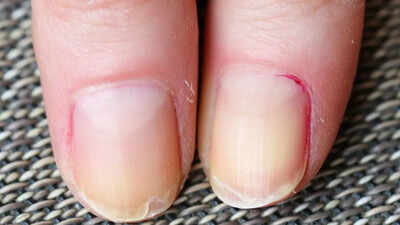Fibroids in the uterus aren’t always dangerous: Myths and facts explained by expert

Fibroids in the uterus are far more common than many realise, yet they remain surrounded by confusion and fear. Many women mistake them for cancer or assume they always require surgery. In reality, most fibroids are harmless, manageable, and sometimes even symptom-free. In an instagram post shared on April 23, 2025, Dr Neema Sharma, a gynaecologist at Fortis, Vasant Kunj, clarifies some of the most common myths and explains how early diagnosis and proper medical care can help maintain good reproductive health.
Understanding and debunking common myths about fibroids
Fibroids are non-cancerous growths made up of muscle and fibrous tissue, and can develop in or around the uterus. They vary significantly in size and may occur as a single growth or in clusters.One of the biggest challenges in managing uterine fibroids is the number of myths that surround them. These myths often cause unnecessary panic and lead women to believe that they face a serious health threat when, in truth, fibroids are generally benign.Myth 1: Fibroids are cancerous.In most cases, fibroids are non-cancerous growths. They do not increase the risk of cancer and are typically harmless. While very rare cases of cancerous growths can occur, they are extremely uncommon and not directly caused by fibroids.Myth 2: Surgery is required for every fibroid.Not all fibroids need surgery. Many are small, harmless, and do not cause any discomfort or complications. Surgical procedures are usually considered only when fibroids lead to symptoms such as heavy bleeding, pain, or fertility issues.Myth 3: Medicines can shrink fibroids.While medication can help manage symptoms like pain or heavy bleeding, it usually does not shrink fibroids significantly. In more severe cases, surgical or minimally invasive treatments are recommended to remove or reduce fibroids.Myth 4: Every fibroid causes symptoms.Many fibroids are discovered by chance during ultrasound scans or check-ups, as they do not cause any symptoms at all. Only larger or multiple fibroids tend to lead to noticeable signs such as pelvic pain or heavy periods.By separating fact from fiction, women can better understand their health and avoid unnecessary worry over conditions that are often easily managed.
Uterine fibroid symptoms every woman should watch for
Fibroids can affect every woman differently. Some may experience no symptoms at all, while others may face discomfort or changes in their menstrual cycle. Common signs include heavy or prolonged menstrual bleeding, pelvic pressure or pain, frequent urination, or discomfort during sexual activity. In some cases, fibroids may also affect fertility or cause complications during pregnancy.Diagnosis usually begins with a routine pelvic examination, where a doctor may detect an enlarged uterus or feel irregularities. To confirm and understand the condition better, imaging tests such as ultrasound scans are carried out to determine the number, size, and exact location of fibroids.When more detailed information is needed, doctors may recommend further tests such as MRI or hysteroscopy, which allow for clearer internal views. Early diagnosis plays a key role in preventing complications and planning the most effective treatment approach suited to the patient’s needs.
Fibroid diagnosis: When to see a gynaecologist
Fibroids can be unpredictable. Some may grow slowly, others may shrink or remain unchanged. Because of this, expert medical guidance is vital. Regular check-ups help monitor fibroid growth, detect any new symptoms, and determine whether treatment is necessary.Many women discover fibroids incidentally during scans and may never experience any discomfort or need for treatment. However, even in such cases, professional advice can provide reassurance and prevent unnecessary anxiety. As Dr. Neema says, “If you see a fibroid in your ultrasound, don’t panic. See your gynaecologist.”A clear understanding of fibroids helps women approach their diagnosis with confidence rather than fear. Specialists not only explain available treatment options but also tailor them to suit individual needs. Timely intervention and consistent follow-up play a key role in achieving the best possible health outcomes.For women living with fibroids, awareness and accurate information can make all the difference. With the right care and medical support, managing fibroids is not only possible but often far simpler than the myths suggest.
How fibroids are treated: Surgery, medicines, and non-surgical options
The treatment of fibroids largely depends on their size, number, location, and the severity of symptoms. It also takes into account a woman’s age, overall health, and reproductive goals.For women with small or symptom-free fibroids, active treatment may not be necessary. In such cases, doctors usually recommend regular monitoring through follow-up appointments and periodic scans to track any changes.For those experiencing discomfort or heavy bleeding, medications may be prescribed to regulate hormone levels and ease symptoms. However, these medicines usually do not remove fibroids completely.Surgical options are available for more severe or persistent cases. Procedures such as myomectomy (removal of fibroids while preserving the uterus) and hysterectomy (removal of the uterus) are considered when symptoms significantly affect quality of life. For women seeking less invasive solutions, procedures like uterine artery embolisation can help shrink fibroids by cutting off their blood supply.Each treatment method carries its own benefits and considerations, so consulting a qualified gynaecologist is essential before making any decision. Regular follow-ups ensure that treatments remain effective and can be adjusted as needed over time.Disclaimer: This article is for informational purposes only and should not be considered medical advice. Please consult a healthcare professional before making any changes to your diet, medication, or lifestyle.Also Read | Harvard-trained gastroenterologist reveals bathroom mistakes that damage digestion and gut health; shares tips to improve bowel movements and overall digestive wellness






